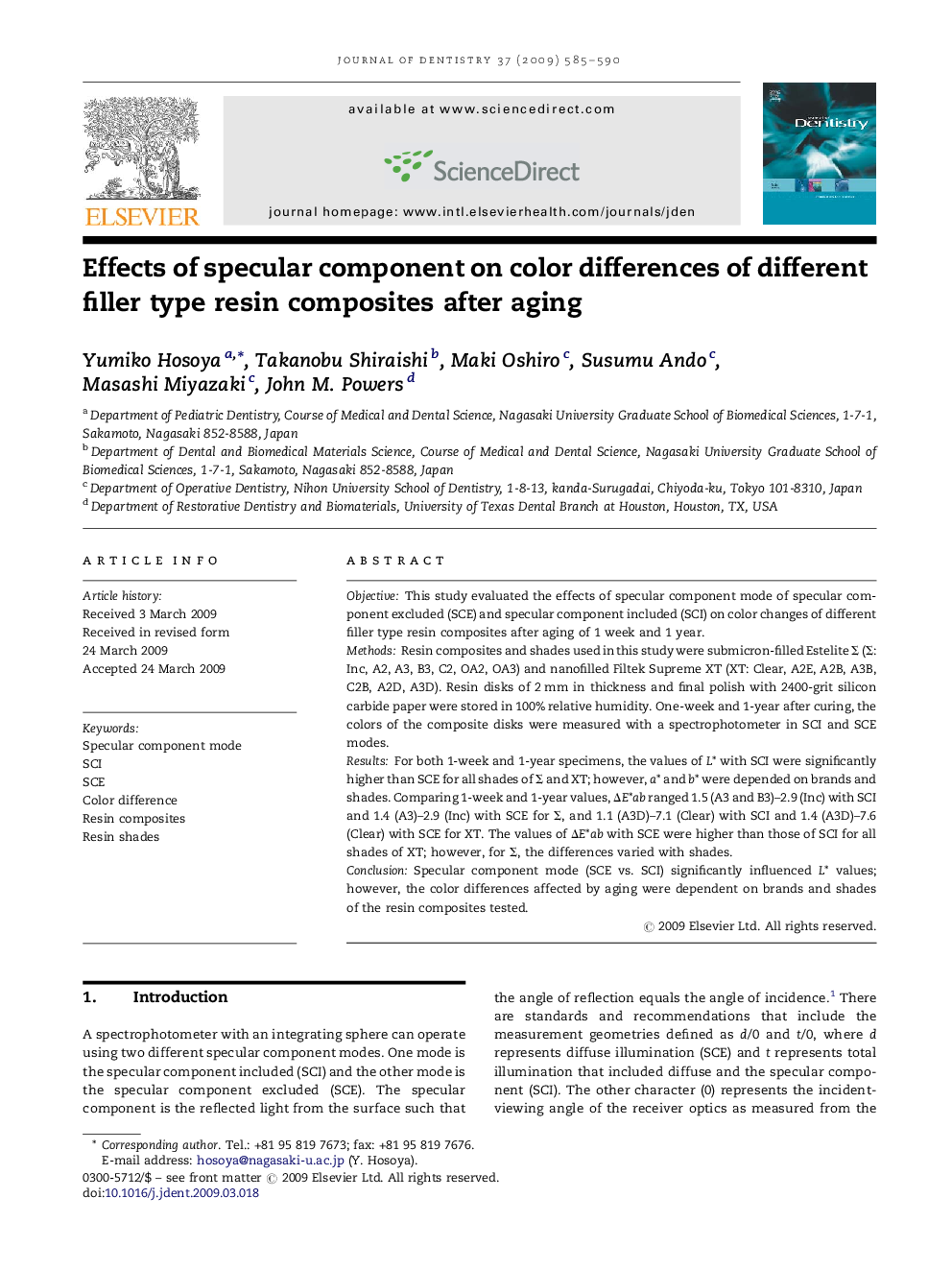| Article ID | Journal | Published Year | Pages | File Type |
|---|---|---|---|---|
| 3145750 | Journal of Dentistry | 2009 | 6 Pages |
ObjectiveThis study evaluated the effects of specular component mode of specular component excluded (SCE) and specular component included (SCI) on color changes of different filler type resin composites after aging of 1 week and 1 year.MethodsResin composites and shades used in this study were submicron-filled Estelite Σ (Σ: Inc, A2, A3, B3, C2, OA2, OA3) and nanofilled Filtek Supreme XT (XT: Clear, A2E, A2B, A3B, C2B, A2D, A3D). Resin disks of 2 mm in thickness and final polish with 2400-grit silicon carbide paper were stored in 100% relative humidity. One-week and 1-year after curing, the colors of the composite disks were measured with a spectrophotometer in SCI and SCE modes.ResultsFor both 1-week and 1-year specimens, the values of L* with SCI were significantly higher than SCE for all shades of Σ and XT; however, a* and b* were depended on brands and shades. Comparing 1-week and 1-year values, ΔE*ab ranged 1.5 (A3 and B3)–2.9 (Inc) with SCI and 1.4 (A3)–2.9 (Inc) with SCE for Σ, and 1.1 (A3D)–7.1 (Clear) with SCI and 1.4 (A3D)–7.6 (Clear) with SCE for XT. The values of ΔE*ab with SCE were higher than those of SCI for all shades of XT; however, for Σ, the differences varied with shades.ConclusionSpecular component mode (SCE vs. SCI) significantly influenced L* values; however, the color differences affected by aging were dependent on brands and shades of the resin composites tested.
